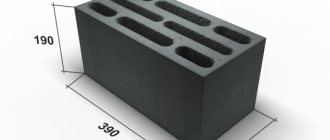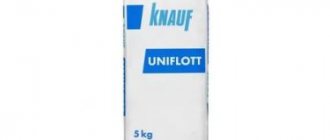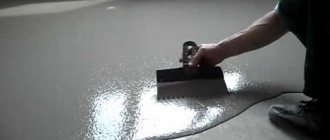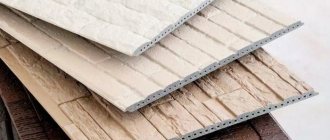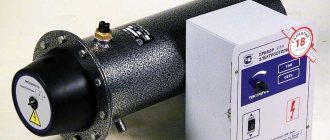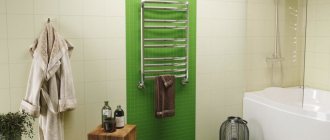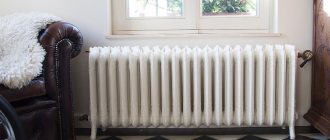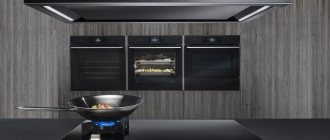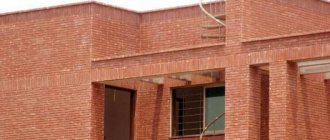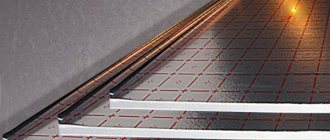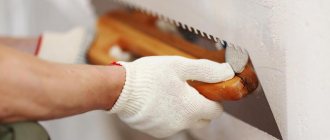Finishing putty (putty) Vetonit LR (Vetonit LR Plus) on a polymer binder for finishing ceilings and walls in rooms, forms a layer 1-5mm thick in white. Used for finishing putty before wallpapering and painting. Can be applied manually or by machine.
Features Vetonit LR Plus
- wall alignment
- ceiling leveling
- short-term moisture resistance
- used on all types of smooth surfaces
Finishing putty (putty) Vetonit LR Plus
on a polymer binder is used for finishing ceilings and walls indoors, forming a white layer 1-5 mm thick. It is used for finishing putty for wallpapering and for painting walls and ceilings. It can be applied manually or by machine.
Features of Vetonit LR Putty (Vetonit LR Plus)
- leveling ceilings;
- leveling walls;
- used on all types of smooth surfaces;
- short-term moisture resistance.
Vetonit LR+ putty
applied to smooth surfaces made of mineral substances, surfaces leveled with primer or putty, gypsum bases, walls and ceilings made of plasterboard slabs.
Vetonit LR+
mixture cannot be used for leveling floors and cannot be used as a base for ceramic tiles. It is also not suitable for sealing joints in plasterboard and for use on a wide variety of wet construction surfaces or in damp areas.
When using Vetonit LR Plus putty
strict adherence to technology is necessary.
Vetonit LR+
is diluted with water, a plastic, homogeneous mass is formed that is easily applied to the base and has a long service life after drying. With a material layer thickness of 1 mm, the mixture consumption is 1.2 kg per 1 sq. m, and the maximum permissible layer thickness is 5 mm (for one application).
Vetonit LR
is a finishing putty for high-quality finishing putty on the following substrates: gypsum, gypsum plasterboards, concrete, substrates treated with wall putties or plaster mortars.
After plastering the ceiling with Vetonit LR, no further work can be carried out. Vetonit
finishing putty allows you to bring the surfaces it treats to “zero”, to a mirror level.
If technologically there is a need to level walls or ceilings in several layers, then before applying the next layer of Vetonit LR+ putty
, it will be necessary to completely dry all previous layers. Each layer must be sanded with sandpaper or other abrasive material.
Finishing putty Vetonit LR+
is not waterproof.
Vetonit VH
putty is suitable for damp or wet rooms and for building facades . It contains polymer glue.
Vetonit LR
Suitable for use within 24 hours after mixing it with water.
The applied putty dries within 48 hours at a temperature of +10 C and 24 hours at room temperature. Thorough ventilation of the room in which Vetonit LR+ putty was used is necessary.
The duration of the drying period directly depends on the thickness of the applied layer, the presence of ventilation and maintaining the desired temperature in the room.
Tools used when working with Vetonit LR putty
, should be thoroughly cleaned immediately after each use. The solution, which was obtained from a dry mixture, can clog the pipes, so do not pour the remaining material down the drain. It is necessary to observe a moisture-resistant regime, since excess moisture can give the putty a slightly yellowish tint.
INSTRUCTIONS FOR USE:
Preparing the base:
The base must be clean, hard and durable. Windows and other untreated surfaces must be carefully protected. Substances that weaken adhesion such as grease, dust, etc. must be removed.
Preparation of the mixture:
Gradually pour a bag (25 kg) of dry mixture into a container with 8 - 9 liters of water, stirring at the same time. Recommended water temperature + 20°C. Mixing is carried out using a drill with an attachment for 3-5 minutes. Let the solution sit for 10 minutes. After this, stir the mixture again before use. The mixture is suitable for use 1 day after mixing with water.
Application:
Apply the mixture manually using a steel spatula or spray it mechanically. The previous layer of putty must dry before applying the next layer. Grind the working seams and surface after sufficient drying after 1 day. The hardened mixture is ready for painting or wallpapering.
To increase the wear resistance of the material and improve adhesion to solids, replace 10% of the mixing water with weber.vetonit MD16. weber.vetonit LR+ putty is not waterproof and is not suitable for leveling floors or preparing substrates for tiling.
Working tools and equipment are washed with water immediately after completion of work.
What is the difference between Vetonit KR and LR?
The company produces different putty compositions, and the choice is easier to make if you understand the differences between similar types. So often the choice falls between LR and CR species. Vetonit KR LR the differences between them are insignificant, so the choice becomes even more difficult. But they can all be distinguished.
What is the difference between Vetonit LR and KR, the most important distinguishing property is the constituent components. KR is made from organic substances, and LR from synthetic ones. It is difficult to say for sure that the first option is better than the second, or vice versa, but experts note that the KR type emits an unpleasant odor.
The LR species has various subspecies, which allows you to select the desired option more accurately. But the KR is also produced in small containers, which makes it possible not to worry about throwing out excess after completion of work, if 25 kilograms turned out to be too much.
There are no other points in which they differ, so the choice is mainly made from personal preferences, taking into account the characteristics of the surface being treated.
The LR species has various subspecies, which allows you to select the desired option more accurately.
Product characteristics
| Finish type | Under wallpaper, under paint |
Today, putty is the most popular method of finishing walls and load-bearing structures. Before the main decoration, the surface is carefully processed; one of these stages is the application of putty. In essence, this is a standard leveling of the base using special building mixtures. As experts note, Vetonit putty rightfully bears the title of the best mortar for wall finishing. Compared to other analogues, it has a lot of advantages, distinctive technical characteristics and operational properties.
Applying putty is a very labor-intensive process, but using high-quality products makes it easier to putty walls and also helps the coating dry faster (regardless of the number of layers).
Vetonit Weber is a famous collection consisting of individual modifications of the putty. The most popular is Vetonit lr putty. Due to its unique composition, it is used for finishing plastered, concrete walls and ceilings, as well as plasterboard partitions.
In most cases, Weber Vetonit putties are used for external decoration of walls, as well as as a base for painting or wallpapering (for example, Vetonit putty kr). There is also façade putty designed for leveling walls outside buildings (facades).
As noted above, this series presents different types of putty, differing from each other in their composition and direct purpose. However, filler and binders (oil or other) are an integral part of all putties in this series. That is, there are two complementary components, due to which the structure of the material is unpretentious in use.
Most of the composition of the putty is taken up by filler (limestone), while polymer glue acts as a binding element.
Preparation of the solution
To prepare putty with optimal structure and consistency, dilute the dry mixture with water in accordance with the proportions indicated on the package. The result should be a homogeneous mass of medium density.
Before diluting the putty mixture, you should know that water must be added to the solution in portions, and its temperature should be approximately 20 degrees.
There are some professional tips to follow:
- After the finished putty has infused a little (for 10-15 minutes) and acquires a more uniform texture, it should be thoroughly mixed again using a construction mixer.
- After mixing the solution, no more than 24 hours should pass until the putty is applied, otherwise the mixture will lose its properties and harden.
- If there is still dry mixture left in the package, it is recommended to store it in a cool (but dry) and dark place.
Advantages and disadvantages
Vetonit KR finishing putty has its positive and negative sides. To understand whether you should use a surface treatment product, you need to study all the features in advance. Among the advantages are the following:
- After completing the putty work, sanding is not difficult; the layer is easy to process;
- Can be used for a variety of materials: plasterboard sheets and gypsum base, mineral, wood, painted wall, base made of organic minerals, concrete, expanded clay concrete blocks;
- After preparing the solution, the properties are retained for 24 hours;
- It is allowed to treat the base with a spatula or using a spraying tool;
- Treating the plastered layer with putty helps to obtain a smooth and white base.
Among the disadvantages are:
- It is not permissible to use it for treating floors;
- It is not moisture resistant, so the area of use is limited to rooms with average humidity levels.
After completing the putty work, sanding is not difficult; the layer is easy to process.
Methods for applying putty
Leveling walls with putty is done in two ways:
- mechanical spraying (using special equipment);
- applying the putty mixture manually (using spatulas of different sizes).
The latter option is more often applicable for putty polymer materials. It all depends only on the personal preferences and tasks of the person performing the construction work. The putty layer should not exceed 5 mm, otherwise the coating will dry out for a long time and unevenly.
When applying several layers of putty, each subsequent layer is applied only after the previous one has completely hardened.
On video: tips on puttying walls from experts.
Types of putties and their descriptions
Vetonit putty is available in several types. Each product has its own unique composition and purpose. Thus, the following groups of materials can be distinguished:
- VH, V, TT - with these marks, mixtures that are made on the basis of cement are released for sale. Materials of this group are excellent for any type of premises; they can be used in the bathroom, kitchen and toilet (where there is high humidity).
- LR and KR - these markings indicate that the putty mixtures are intended for final leveling of walls and ceilings, resulting in a coating suitable for subsequent painting or wallpapering. Materials of this group cannot be used in rooms with high levels of humidity.
Vetonit VH
This type of product is best suited for use in conditions of high humidity. Vetonit vh putty, in addition to its main task of preparing the surface for subsequent painting, performs a protective function - it prevents the appearance of condensation on ceilings and load-bearing structures in rooms with high air humidity.
The product is presented in two versions: white and gray. The white model of Vetonit vh putty is simply irreplaceable if the surface is planned to be painted. The second option is used as a primary layer before laying tiles.
The main feature of this putty mixture is the ability to be used on surfaces made of a wide variety of materials. As the instructions say, the finishing putty can be used on plastered, concrete, stone (brick) walls and bases made of expanded clay, foam aerated concrete, and gas silicate blocks.
Vetonit LR and LR+
Vetonit finishing putty is in high demand on the building materials market; it has a unique composition, low cost and is easy to use. The Weber Vetonit lr putty model is designed for finishing dry rooms, therefore, compared to other brand products, it has a more viscous and dense structure. After applying the Vetonit finishing putty, they begin wallpapering the walls or painting work using specialized highly pigmented paints.
It is worth noting that this product is not suitable for leveling non-standard, volumetric planes, as well as large-sized objects. This is how most finishing compositions work, whose main task is to reduce the sharpness of the transitions between layers of plaster and paint and minimize surface unevenness. White base putty is best suited for plaster and chipboard surfaces.
The putty is available in different configurations, most often it can be found in a powder version in 25 kg bags. You can also see a ready-made putty mixture that does not need to be diluted with water.
There is also a product Vetonit LR+. This is a polymer putty from this collection. Due to its unique composition, it is ideal for finishing ceilings and walls in dry rooms. This is the starting and most popular model. Its distinctive characteristics are low consumption, quick drying, ease of use and a very affordable price. The diluted composition can be applied over smooth or rough surfaces (plasterboard and mineral materials).
On the Internet you can find many positive reviews about the use of this product, with most buyers appreciating the low consumption of material and its versatility. Plastering walls and ceilings with Vetonit allows you to prepare the surface for subsequent paint application.
Important! Vetonit lr plus putty is usually applied by spraying onto walls and ceilings made of plasterboard or particleboard. This starting mixture can also be used as an adhesive layer for installing gypsum boards.
KR and TT products
Marking KR means that the putty is finishing. Before using it, the VH starting solution is first used. Vetonit TT putty is a universal composition that can be used both as a starting and finishing coating. In addition, this material is also suitable for finishing facades.
Vetonit LR
This putty has several varieties. Vetonit LR and LR+ are a powder mixture produced in twenty-five kilogram packages and, when used, are practically no different from Vetonit KR. However, before purchasing, keep in mind that Vetonit LR+ cannot be applied to painted surfaces.
Vetonit LR Silk, or as it is also called - white silk, contains not only limestone, but also ground white marble, which gives the finishing layer a simply radiant white color.
There is also Vetolin LR, which is produced not in powder form, but in the form of a ready-to-use mixture. It is packaged in plastic buckets weighing twenty kilograms, and can be used within 24 hours after opening.
Where is it used?
The described putty is perfect for surfaces made of drywall or plaster, as well as cement and cement-limestone. However, one must take into account the fact that Vetonit LR is a material that does not tolerate moisture. So it can only be used for interior work and not in every room.
Vetonit LR is a putty for the finishing layer, which means that it is applied at the very end, after preliminary leveling and processing of the walls or ceiling. This putty is not designed to smooth out large differences. Also, do not apply it in several layers.
Vetonit LR should not be used as a base for tiles or for leveling floors.
Peculiarities
The main difference between Vetonit KR and LR materials is their composition. As mentioned above, the first uses organic materials, while the second uses artificial materials, in particular polymer glue. Thanks to this, Vetonit LR does not have an unusual and many unpleasant odor during operation, which is observed when finishing with Vetonit KR.
The putty described is created to high standards, therefore it is an environmentally friendly material.
If you are a professional, then when working with Vetonit LR you can achieve a very thin and even layer of half a millimeter, which after drying will not require sanding. The specified drying time is the same as for Vetonit KR - a day. However, when planning work, it is necessary to take into account all conditions under which the drying time can double.
Vetonit LR has heat and sound insulation characteristics. And just like Vetonit KR, a properly prepared solution can be used within 24 hours, applying it with a spatula or spray.
How much material is needed for finishing?
The main criterion when choosing a product for puttying surfaces in domestic conditions is product consumption. As for Weber putty, all models in this series have different viscosities. Thus, the version of Weber Vetonit lr putty, as well as individual modifications of Vetonit kr putty, have different consumption.
Before purchasing a putty mixture, you need to calculate the required amount of material. To make it clearer, let’s look at the consumption of Vetonit kr putty as an example. When finishing walls, about 1.2 kg of ready-made mortar is consumed per 1 m2 of surface, while seven liters of water are enough to dilute the mixture (this figure may vary depending on the structure of the material).
Vetonit LR Plus is used when final leveling of the wall surface is necessary. Vetonit is a well-known brand that is trusted by both builders and end consumers. And the finishing putty of this brand combines convenient functional qualities and an affordable price.
The specified material is intended for use in rooms with normal humidity levels.
Purpose and technical characteristics, consumption
Vetonit KR putty is applied as a final layer to create an ideal surface without even small irregularities. After using the solution, a layer is created that has a decorative property; for this reason, when processing the ceiling base, sometimes further finishing is not carried out.
Vetonit KR putty is sold in the form of a powder mixture, so you need to prepare the composition for application by adding water in the required proportions.
Areas of use:
- Final preparation of plasterboard ceiling and wall bases;
- To apply material for leveling on chipboard;
- Suitable for cement-lime base;
- Designed for use in rooms with moderate and humid microclimates;
- If the spray technique is used, then particleboard and porous-fiber walls can be treated.
The solution cannot be used for the following materials:
- It will not withstand constant damp exposure, so it is not used in rooms with high humidity;
- Not suitable for laying tile material;
- Not used for flooring.
Vetonit KR technical characteristics:
- Consists of an organic adhesive substance and organic limestone;
- White color;
- Temperature indicators for operation from +10 to +30 degrees;
- The average consumption level when creating a millimeter layer is one kilogram per square meter of surface;
- Complete drying lasts 1-2 days, the period is affected by the thickness of the layer;
- Not moisture resistant;
- Packed in a thick paper bag;
- Available in volumes of 5 and 25 kilograms;
- Unopened composition can be stored for one year.
Vetonit KR putty is applied as a final layer to create an ideal surface without even small irregularities.
Features of the material
Putty of this series is used in preparing walls. This is the finishing material, after which the walls are painted or covered with wallpaper, etc.
Among the main features of the material, the following should be highlighted:
- Plastic. Thanks to this quality, it is easy to work with, the material fits well on the walls;
- Perfect white color. At the same time, it is applied in an even layer. This allows you to stick thin and light wallpaper. The material will not show through and affect the interior;
- Application thickness. The mixture is applied in a thin layer and dries within one day. The optimal layer is considered to be 5 mm, no more. Otherwise, the mixture will take a long time to dry out.
Vetonit LR Plus can be used on any type of wall surface: it can be sheets of plasterboard, a surface plastered under a lighthouse, and so on.
Material advantages
The main advantages of Vetonit LR Plus finishing putty are its working qualities. So, if there are minor irregularities left on the wall, they can be removed by treating them with a regular sanding block.
In addition, the prepared mixed mixture retains its qualities and remains suitable for work for several days. Therefore, if work is suspended, it can be safely resumed after 3 days.
Reviews
Average customer rating:()
0 0 0 0 0 1 no rating Vetonit LR / Yuri
Yuri website December 26, 2015 21:35
Vetonit LR is a special polymer putty that is designed for high-quality leveling of all walls, as well as ceilings directly inside dry rooms. The main areas of application of Vetonit LR putty The scope of this putty is varied. These are: various gypsum surfaces; ceilings and walls, which are made of various plasterboard, particleboard, and fiber boards; high-quality leveling of all surfaces of ceilings and walls for final finishing directly during repairs and in new construction, up to approximately 3 millimeters per application. Distinctive features of Vetonit LR putty: quality products; high adhesion to all surfaces; ease of use of the product; possibility of special mechanical spraying; the ability to obtain, if necessary, smooth and even surfaces for pasting with a variety of thin wallpapers; reliable and modern products. Preparation of the base for application of Vetonit LR The average temperature of the environment and the base must be approximately from +10 to +29 degrees. This putty is not suitable for direct use on all surfaces of wet structures, in those rooms where there is a wet and humid microclimate, as well as for leveling the seals and floor joints of all plasterboard boards. Features of preparing the solution: to prepare the solution, you need to pour into any container the amount of water necessary to directly mix one bag. Then pour the contents of such a bag into it; mix the mixture using a special drill mixer; leave the putty for about 15 minutes, then stir it again; The average time for using the ready-made mixture is indicated on the bag. It should be said that the price for this product is quite reasonable. You won't spend a lot of money on such a product. Safety precautions When performing work, you should use high-quality gloves, and also protect your respiratory tract well. To directly prevent skin irritation, avoid contact of this solution on all exposed areas of the body. If this mixture gets into your eyes, you need to quickly rinse them with water, and if necessary, consult a good doctor. In addition to this useful information, be sure to follow the instructions on the packaging of this product. You can always buy such products on the market and in specialized stores. Don’t forget about online stores, where the cost of goods is known to be much lower. You can also buy Vetonit LR in bulk. To do this, it is enough to find suitable stores or companies that sell goods. Moreover, the price for wholesale products is always lower than for retail products. This always applies not only to such products, but also to other goods. If you buy this product at retail, then you can choose the desired products in a regular store. This usually takes very little time. The main thing is to know what exactly you need and exactly what cost you expect. Good luck!
Hello, dear visitors! This time we will get acquainted with a whole phenomenon in the world of finishing materials. The hero of the day today will be putty, whose name has long become a household name for craftsmen - Vetonit putty (weber.vetonit LR+).
Nowadays, construction stores offer dozens, if not hundreds, of different types of putties: gypsum, cement, polymer. But two brands stand apart; they are available always and everywhere, and have been producing them for decades. Yes, yes, the first one is Vetonit. What's the second one? If you're a decorator, you probably know the answer.
This is Sheetrock. There will definitely be a separate article about it too. This thing is very, very high quality. In order not to miss material about, subscribe to updates, the post will be very useful for everyone!
But for now we are talking about the product weber.vetonit LR+.
This is what is meant when they say “vetonite”. This is a finishing putty with a polymer binder. What does "finish" mean? And the fact is that after its application, wallpaper and/or painting, that is, finishing coatings, begin.
In other words, this mixture forms a high-quality coating, ready for painting and wallpapering. As for the binder. Any construction mixture consists of aggregate and binder. The filler is usually sand, limestone is what forms the bulk of the composition. And the binder holds the filler particles together and, naturally, ensures adhesion to the base surface. In this putty, the binder is a kind of polymer glue, and the filler is limestone.
Our hero is produced by Weber-Vetonit, part of the Saint-Gobain group. Packaged in paper bags of 25 and 5 kg.
Basic properties
The purpose of this putty mixture is to level walls and ceilings in dry rooms before wallpapering and painting. It is used on all types of smooth mineral surfaces and drywall. Formally it has a white (in practice slightly grayish) color, as well as its own weak specific odor.
By the way, in our village (it’s called Ryazan, maybe you’ve heard of it) it costs around 650-700 rubles for 25 kg.
It should be remembered that it is not moisture resistant, and is not suitable as a base for laying tiles or as an adhesive for anything. For example, some people manage to glue ceiling plinths onto it. This cannot be done. Its structure is quite loose and fragile, which, however, does not affect its ability to hold wallpaper on itself, but can play a fatal role when trying, for example, to seal the joints of HA sheets with it.
Water consumption is 9 liters per 25 kg bag. The mixture is stirred using a drill or a hammer drill with a mixer until it becomes sour cream, after which it is allowed to brew for 10 minutes. This time is needed for better dissolution of the binder. It is noticed that after these 10 minutes the mixture thickens a little. Then it is mixed again.
Again, a separate article will be published about the technique of puttying walls and ceilings, the topic is very important, so subscribing to updates is a sacred thing!)) The article will contain a couple of my know-how, and I will just use Vetonit. Now is the time to find out what are the secrets of his popularity?
Vetonit KR and LR+ - what is the difference?
Dear visitor! You are in the archive of the old forum on mastergrad.com
| snim (Moscow) May 7, 2005 08:20:16 | I twisted the bag and read it, comparing almost every word. I found only one difference: — LR+ has a polymer glue binder; — KR has an organic glue binder. What is the fundamental difference? What is better to use as a finishing putty for the ceiling, and if it remains, then for the walls? |
| Tsvetaev (Moscow) May 7, 2005 11:56:56 | And this is the only difference - KR is based on casein glue, and LR is based on chemistry. |
| kevga (Volgograd) 7 May 2005 13:24:34 | 2snim: It seems that the size of the factions is different. In LR it is slightly smaller than in KR. According to LR, I also did the finishing with a smaller fraction. |
| snim (Moscow) May 7, 2005 15:02:54 | 2kevga: The fraction on both is written <less than 0.3mm> ———— 2Tsvetaev: So I’m trying to understand what the difference between casein glue (KR) and chemistry (LR+) will be?? Skinning is better/worse; smoother/rougher; easier/difficult to apply; etc.. |
| spt01 (Moscow) May 7, 2005 20:06:25 | 2snim: I won’t say anything about “sanding” - most likely it’s about the same thing, but casein is simply inconvenient to work with in the following sense: you can’t leave the batch, for example, the next day (at room temperature). It “goes rotten” - you open the bucket and “go crazy” from the stench. LR does not have such problems. My painters left the batch under the lid on May Day and for 4 days. |
| DmitriiM (Moscow) May 8, 2005 23:55:10 | In LR the binder is most likely acrylic, PVA or modified cellulose. KR contains casein (protein). There were rumors (I confess, I also spread them, although I never found the source) that in Europe the latter is no longer used at all. In principle, protein is a good breeding ground for mold/mildew even with low humidity, plus it is itself a fairly strong allergen. However, allergies are a tricky thing. In rare cases (individually), even acrylic can cause a reaction, although it is now used almost everywhere, and acrylic-based paints are recommended even for hospitals and children's institutions. |
| DmitriiM (Moscow) May 8, 2005 23:58:15 | Quite a lot of theory (and practice, although not cheap) is available at https://www.shpaklevka.ru/ |
| snim (Moscow) May 9, 2005 09:26:03 | Thanks to all! Vetonit LR+ was purchased (I believe that the choice is correct). Yesterday I tried to work with Vetonite for the first time - I liked it. And today I looked at the ceiling - white |
